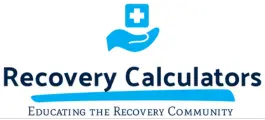Xanax and Alcohol
Examining the synergy of Xanax and alcohol unveils a potentially hazardous blend of a potent anti-anxiety medication and a widely consumed depressant. This discussion delves into the physiological and behavioral impacts arising from their concurrent usage, emphasizing the perils inherent in their interaction.
From 2003 to 2009, the CDC observed alarming patterns in fatalities linked to prescription drugs. Notably, Xanax, a benzodiazepine, experienced the most significant surge in mortality rates, skyrocketing by 234%. This underscores the imperative of comprehending the hazards associated with this pharmaceutical agent.
Questions answered in this article:
Our Alcohol Addiction Treatment Centers

Scottsdale Rehab
Luxury Personalized Rehab

HART Rehab
Holistic Luxury Personalized Rehab

Scottsdale Detox
Luxury Medical Detox
What is Xanax?
Alprazolam, sold as Xanax, is a prescription drug known as a benzodiazepine. Doctors often prescribe it for anxiety and panic disorders. It works by boosting the activity of a brain chemical called gamma-aminobutyric acid (GABA), which helps calm the brain and ease symptoms of anxiety and panic.
What is Alcohol?
Ethanol, also called alcohol, is a substance found in drinks like beer, wine, and spirits. When you drink alcohol, it acts as a depressant on your central nervous system. This can make you feel relaxed, less inhibited, and have trouble coordinating your movements. But drinking too much alcohol can be harmful to your health, so it’s important to drink responsibly.
What Happens if You Mix Xanax and Alcohol?
Mixing Xanax, which is a type of medication called a benzodiazepine, with alcohol increases the risk of severe depression in the central nervous system. This combination makes it more likely to experience problems like trouble breathing, extreme tiredness, and difficulty coordinating movements.
The stronger effects of both substances highlight the dangers of using them together. It’s strongly advised to avoid taking them at the same time to prevent serious health risks.
Dangers of Mixing Xanax and Alcohol
Combining Xanax with alcohol poses significant health risks, intensifying the potency of each substance and potentially leading to perilous outcomes.
Understanding these hazards is paramount for individuals invested in their well-being. Making informed choices regarding health is essential to avoid unnecessary risks. Some risks associated with this combination include:
- Central Nervous System Depression: When you mix Xanax and alcohol, they both slow down your nervous system a lot. This can cause big problems like trouble breathing, feeling extremely tired, and even passing out, which could be really dangerous.
- Impaired Thinking: Combining Xanax and alcohol messes with your ability to think clearly. It makes it harder to make good decisions, makes you react slower, and messes with your balance, which can make accidents more likely.
- Higher Chance of Overdose: Using Xanax and alcohol at the same time increases the risk of overdosing. Each substance makes the other stronger, which could cause your body to stop working properly.
- Memory Problems: Mixing Xanax and alcohol can mess with your memory. You might have trouble remembering things or even have blackouts, which can be risky in your daily life.
- Worsening Mental Health: When Xanax and alcohol are mixed, it can make mental health issues like anxiety and depression worse. This happens because they mess with the natural balance of chemicals in your brain, making your mood swing more.
What Are the Side Effects of Alcohol and Xanax?
Exploring the consequences of combining alcohol and Xanax reveals a spectrum of potential health issues. The interaction between these substances can result in various adverse effects that surpass the individual impacts of each. It’s essential for individuals to be aware of these combined side effects to make informed decisions regarding their health. Here are the potential side effects:
- Feeling Extremely Tired: When you mix alcohol and Xanax, you might feel extremely sleepy and tired. This can make it hard to stay awake and do normal things during the day.
- Trouble Moving Properly: Both alcohol and Xanax can mess with how well you can move. Using them together makes it even harder to control your body, which can make accidents more likely.
- Feeling Dizzy and Unsteady: Combining alcohol and Xanax can make you feel even more dizzy and like your head is spinning. This can make it hard to stay balanced, especially in situations where you need to be steady.
- Difficulty Thinking Clearly: Using alcohol and Xanax at the same time might make your mind feel fuzzy and unclear. It can make it hard to remember things or concentrate on what you’re doing, which can make daily tasks more difficult.
- Upset Stomach: When you drink alcohol and take Xanax together, it can make your stomach feel really uncomfortable. You might feel sick, throw up, or just feel generally uneasy in your stomach.
Withdrawal From Xanax and Alcohol
Cessation of Xanax and alcohol can present significant challenges, encompassing a blend of physical and psychological withdrawal manifestations. Abrupt discontinuation of these substances can exacerbate anxiety, induce sleep disturbances, and potentially trigger seizures. Seeking assistance from healthcare professionals is crucial to navigating withdrawal safely and enhancing the likelihood of achieving a successful recovery.
Xanax and Alcohol Treatment
Xanax and alcohol abuse is a serious concern as both substances are central nervous system depressants. When combined, they can potentiate each other’s effects, leading to increased sedation, respiratory depression, and a heightened risk of overdose. Treatment for individuals struggling with Xanax and alcohol abuse requires a comprehensive approach that addresses both substance use disorders simultaneously. Treatment options for Xanax and alcohol abuse:
- Medical Detoxification: The first step is a supervised detox to safely manage withdrawal symptoms from both Xanax and alcohol. This could involve gradually reducing Xanax doses under medical supervision and managing alcohol withdrawal symptoms.
- Inpatient Rehabilitation: Inpatient rehab offers a structured environment with intensive therapy and support. It includes individual counseling, group therapy, medical care, and psychiatric support to address the root causes of substance abuse.
- Cognitive Behavioral Therapy (CBT): CBT helps people recognize and change harmful thoughts and behaviors related to substance abuse. It teaches coping strategies to deal with cravings, triggers, and stress without relying on drugs or alcohol.
- Support Groups: Joining support groups like Alcoholics Anonymous (AA) and Narcotics Anonymous (NA) provides a supportive community where individuals can share experiences, get encouragement, and learn from others facing similar challenges.
- Aftercare Planning: Planning for life after formal treatment is essential. This involves creating a plan to prevent relapse and accessing ongoing support, such as continued therapy, participating in support groups, and using community resources to stay sober and handle any obstacles that come up.


